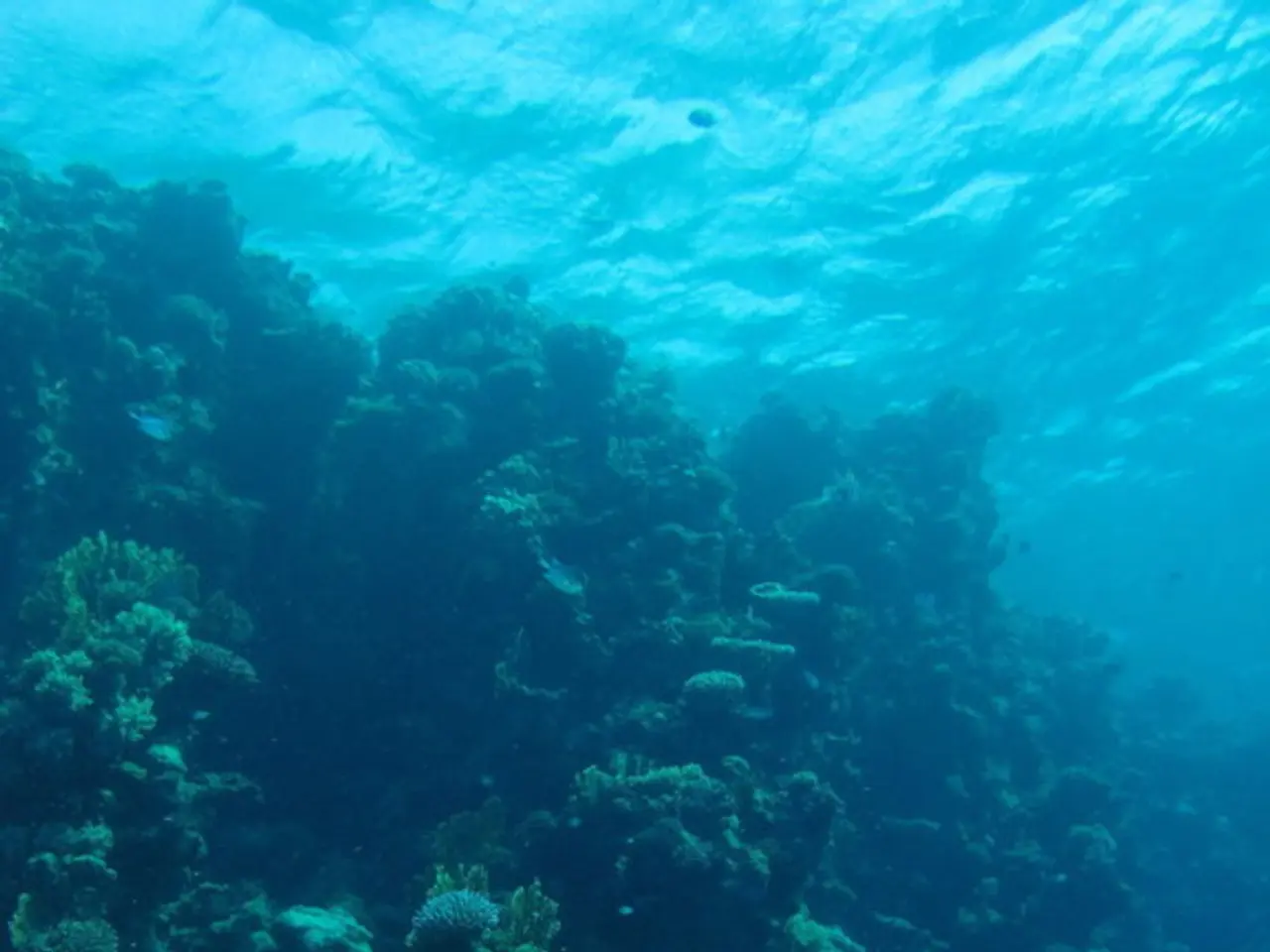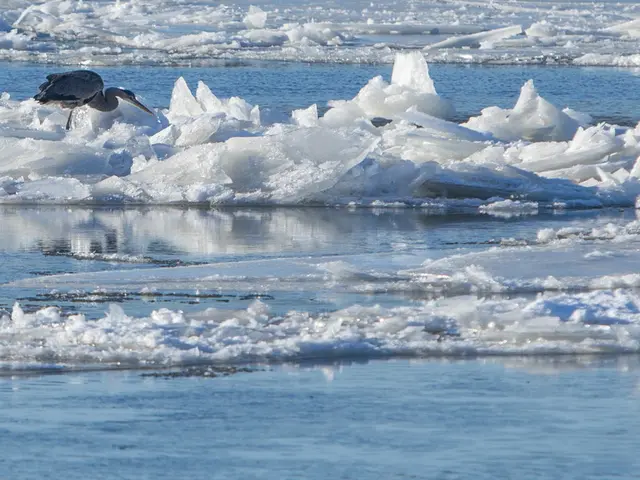Oceanographers contemplate utilizing deep-sea 'barren areas' as sinkholes for carbon sequestration
In the ongoing battle against climate change, a novel approach has emerged: marine carbon dioxide removal (mCDR). This strategy, particularly through biological pump enhancements, seeks to increase the ocean's natural capacity to sequester carbon by promoting the sinking of organic matter.
One such method is the sinking of plant scraps into ocean depths. This approach, while showing potential as a climate mitigation tool, remains a nascent, experimental approach with significant uncertainties about its ecological impacts and governance.
The Black Sea's Euxinic Depths and its Inhabitants
The Black Sea, known for its euxinic conditions—depths devoid of oxygen and saturated with hydrogen sulphide—is home to a unique microbiome. Small invertebrates have evolved to live under these challenging conditions, making the Black Sea a reservoir of high, but as yet unexplored, microbial biodiversity.
The Potential and Risks of Ocean Sinking Methods
While the potential benefits of ocean sinking methods are evident—significant carbon removal potential, cost-effectiveness, and temporary boosts to marine food webs—the environmental and ecological concerns are equally crucial. Unpredictable impacts on marine ecosystems, disruptions to marine biodiversity, and the creation of dead zones are among the risks.
A Promising but Requires Further Research
Enhancing the biological carbon pump by sinking plant matter, including macroalgae, is seen as promising but requires further research to understand trade-offs among storage durability, scalability, cost, and environmental/social risks.
The Future of Ocean Carbon Sequestration
Despite the uncertainties, companies like Rewind, Puro.earth, and Carboniferous are pushing forward with trials in the Black Sea, Orca Basin, and other locations. However, the need for robust environmental impact assessments and governance frameworks to manage risks and rights of affected communities cannot be overstated.
The Intergovernmental Panel on Climate Change's 2022 conclusion underscores the importance of carbon dioxide removal, stating that it is "unavoidable if net-zero CO2 or GHG emissions are to be achieved." As research continues and field trials proceed, it is crucial to approach marine carbon dioxide removal efforts with caution and a focus on minimizing ecological impacts.
[1] NOAA. (2020). Ocean Fertilization. Retrieved from https://oceanservice.noaa.gov/facts/ocean-fertilization.html
[2] Carbon180. (2021). Marine Carbon Dioxide Removal. Retrieved from https://carbon180.org/our-work/marine-carbon-dioxide-removal/
[3] IPCC. (2021). Climate Change 2021: The Physical Science Basis. Retrieved from https://www.ipcc.ch/report/ar6/wg1/
[4] Carbon Clean Solutions. (2021). Marine Carbon Capture and Storage. Retrieved from https://www.carboncansolutions.com/marine-carbon-capture-and-storage/
[5] The Economist. (2021). The ocean could help us combat climate change. But first, we must avoid making it worse. Retrieved from https://www.economist.com/leaders/2021/09/25/the-ocean-could-help-us-combat-climate-change-but-first-we-must-avoid-making-it-worse
- The Black Sea, characterized by euxinic depths and unique microbial biodiversity, serves as a potential test site for marine carbon dioxide removal (mCDR) methods, such as sinking plant matter.
- While ocean sinking methods offer significant carbon removal potential and temporary marine food web boosts, they also present unpredictable ecological impacts and risks, such as disruptions to marine biodiversity and the creation of dead zones.
- Enhancing the biological carbon pump through mCDR trials conducted by companies like Rewind, Puro.earth, and Carboniferous necessitates robust environmental impact assessments and governance frameworks to address ecological concerns and the rights of affected communities.
- As the search for effective climate change solutions continues, the scientific community emphasizes the necessity of minimizing ecological impacts and focusing on mCDR strategies with demonstrated climate-change mitigation benefits and a reduced carbon footprint, such as those that promote the increase of the ocean's natural capacity to sequester carbon.








